Orthodontic Appliances
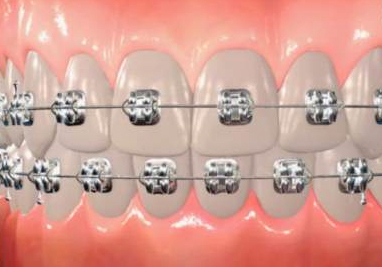
Archwire
A metal wire which is attached to your brackets to move your teeth.

Bands
Bands are a ring of metal, which fit around the molars and sometimes premolars. The bands are selected from a range of sizes in order to find the tightest fitting band. The bands are sealed in position using dental cement that contains fluoride to prevent any decalcification during treatment.

Biteplate
A Biteplate is a removable appliance similar to a retainer or a fixed appliance that is used to correct a deepbite or to help correct a crossbite.
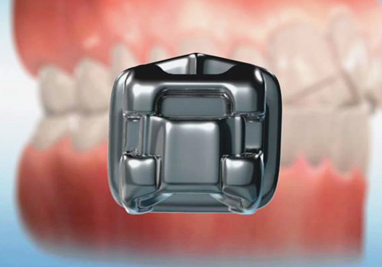
Brackets
Brackets are the small metal or ceramic modules attached to each tooth. They serve as guides to move the teeth and hold the archwire in place.
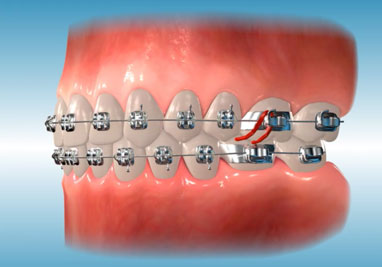
Buccal Tube
A small metal part that is welded on the outside of a molar band. The molar band contains slots to hold archwires, lip bumpers, facebows and other things your orthodontist uses to move your teeth.

Chain
A stretchable plastic chain used to hold archwires into brackets and to move teeth.

Elastics
Elastics or rubber bands for braces help move the upper and lower teeth relative to each other, ultimately achieving a better bite. The orthodontic rubber bands are typically effective for correcting overbites, underbites, or other types of alignments of the jaw. They are also useful for moving a tooth out of alignment or to close a space in the mouth.

Expander
The Fixed Palatal Expander is constructed with a palatal expansion screw whose metal arms are soldered to wire framework. The framework encircles all of the posterior teeth. The Fixed Palatal Expander is an excellent way to widen a narrow upper jaw.

Fixed Retainer
Fixed retainers consist of a metal wire bonded to the back of the teeth. Fixed retainers can stay in place indefinitely.

Invisalign
Invisalign® is a series of clear, removable teeth aligners that orthodontists use as an alternative to traditional metal braces.
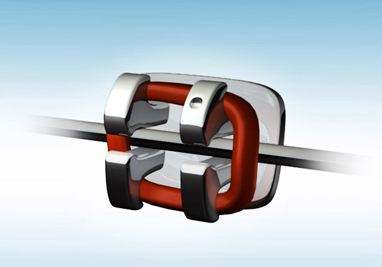
Ligating Module
A small plastic piece, shaped like a donut, which is used to hold the archwires in the brackets on your teeth.
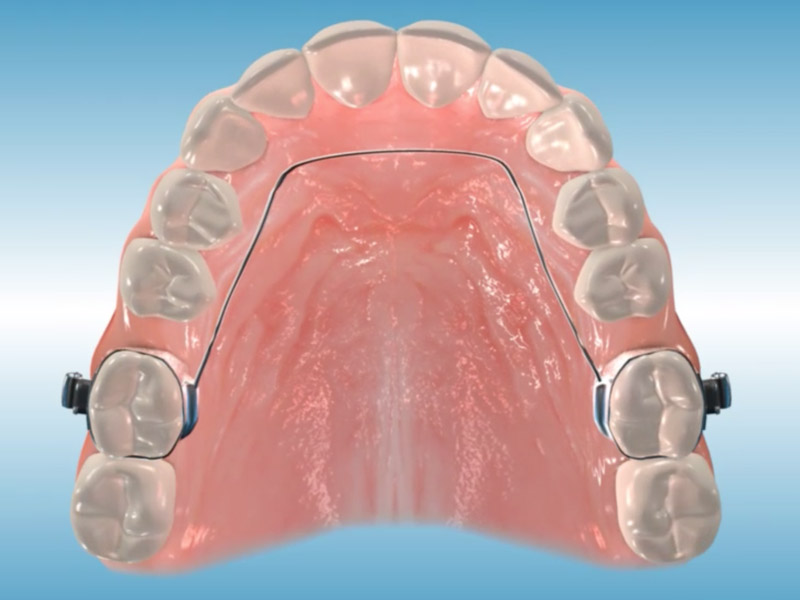
Lingual Arch
A lingual arch is an orthodontic device which connects two molars in the upper or lower dental arch.
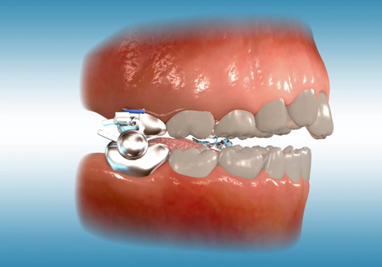
Mara
A Mara is a fixed appliance consisting of metal caps and small, hook-like devices. The hooks impact during the bite to drive the lower jaw forward retraining the bite and correcting a Class II problem.
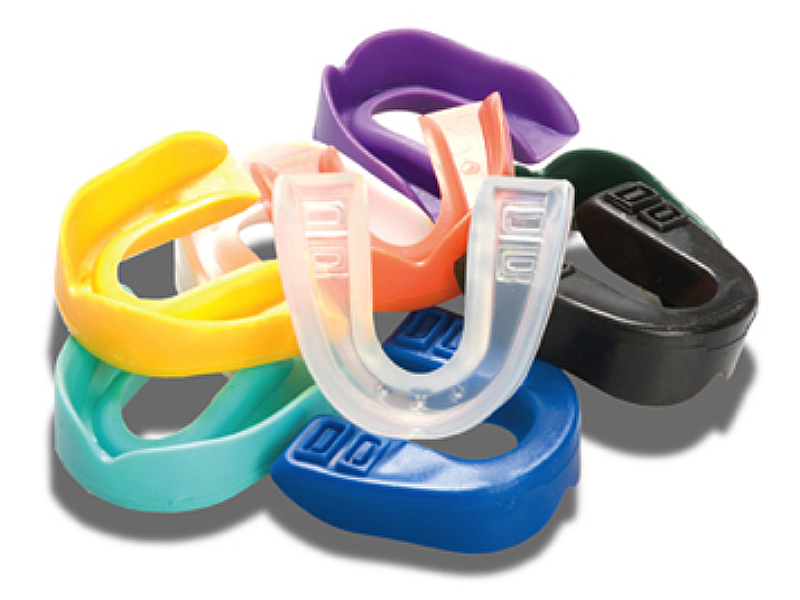
Mouth Guard
A device that is used to protect your mouth from injury when you are participating in sports. The use of a mouth guard is especially important for orthodontic patients, to prevent injuries.
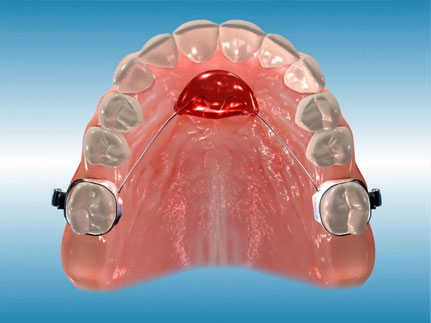
Nance
The Nance button is utilized to hold teeth in position to allow for the movement of other teeth. The impact of the button on the lower palate creates force on the back molars.

Palatal Expander
A palatal expander, also known as a rapid palatal expander, rapid maxillary expansion appliance, palate expander or orthodontic expander, is used to widen the upper jaw so that the bottom and upper teeth will fit together better.
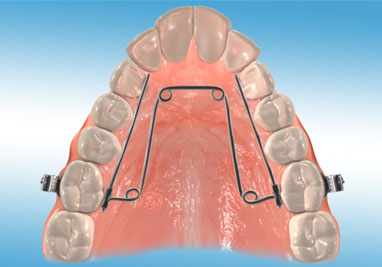
Quad Helix
The Quad Helix is checked and expanded approximately once every six to eight weeks. After the expansion is complete, the Quad Helix will remain in the mouth until the expansion is stable. Patients may feel mild discomfort for a couple of days. The tongue and cheeks have to make adjustments to the new appliance. Speaking and eating will require patience and time getting used to your appliance. Avoid hard foods and sticky foods. You will be able to clean your teeth and Quad Helix with your regular toothbrush.

Removable Retainer
A gadget that the orthodontist gives you to wear after your braces are removed. The retainer attaches to your upper and / or lower teeth and holds them in the correct position while your jaw hardens and your teeth get strongly attached to your jaw. At first, you wear the retainer 24 hours a day, and then only at night.

Separators
Separators are tiny rubber bands or springs that your orthodontist places between your back teeth. These separators prepare your mouth for braces by creating a small gap between these teeth. This space allows for the placement of a metal band around your molar, which anchors your braces in your mouth.
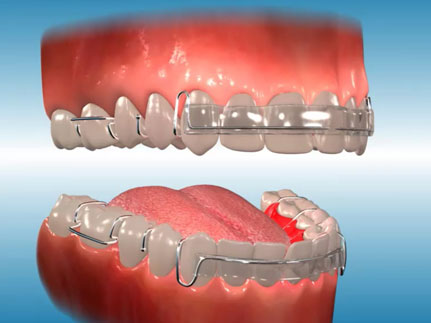
Spring Aligners
An appliance that can be used on both arches for minor rotation and correction of anterior alignment.

Temporary Anchorage Devices
Temporary Anchorage Devices or TADs are miniscrew anchors which are inserted into specific places in the mouth to be used as a fixed point from which teeth can move. They can help move severely angled or impacted) teeth. They are also helpful in achieving orthodontic movement in a mouth with missing teeth.
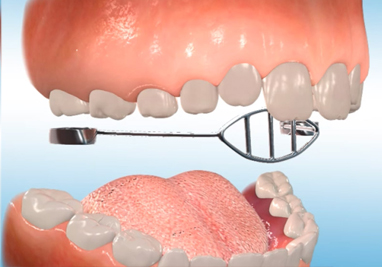
Thumb Crib
This simple device is given to address severe thumb/finger sucking habit. It involves using a fixed wire crib attached to two back braces.
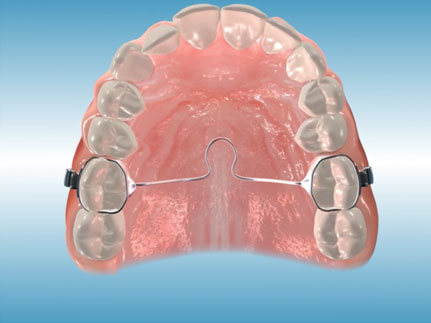
Transpalatal Bar
The Transpalatal Bar (TPA) is a fixed appliance that is attached to bands on the upper molar teeth. The bar that sits across the roof of the palate fits into a soldered clip located on the bands.
Archwire

A metal wire which is attached to your brackets to move your teeth.
Bands

Bands are a ring of metal, which fit around the molars and sometimes premolars. The bands are selected from a range of sizes in order to find the tightest fitting band. The bands are sealed in position using dental cement that contains fluoride to prevent any decalcification during treatment.
Biteplate

A Biteplate is a removable appliance similar to a retainer or a fixed appliance that is used to correct a deepbite or to help correct a crossbite.
Brackets

Brackets are the small metal or ceramic modules attached to each tooth. They serve as guides to move the teeth and hold the archwire in place.
Buccal Tube

A small metal part that is welded on the outside of a molar band. The molar band contains slots to hold archwires, lip bumpers, facebows and other things your orthodontist uses to move your teeth.
Chain

A stretchable plastic chain used to hold archwires into brackets and to move teeth.
Elastics

Elastics or rubber bands for braces help move the upper and lower teeth relative to each other, ultimately achieving a better bite. The orthodontic rubber bands are typically effective for correcting overbites, underbites, or other types of alignments of the jaw. They are also useful for moving a tooth out of alignment or to close a space in the mouth.
Expander

The Fixed Palatal Expander is constructed with a palatal expansion screw whose metal arms are soldered to wire framework. The framework encircles all of the posterior teeth. The Fixed Palatal Expander is an excellent way to widen a narrow upper jaw.
Fixed Retainer

Fixed retainers consist of a metal wire bonded to the back of the teeth. Fixed retainers can stay in place indefinitely.
Invisalign

Invisalign® is a series of clear, removable teeth aligners that orthodontists use as an alternative to traditional metal braces.
Ligating Module

A small plastic piece, shaped like a donut, which is used to hold the archwires in the brackets on your teeth.
Lingual Arch

A lingual arch is an orthodontic device which connects two molars in the upper or lower dental arch.
Mara

A Mara is a fixed appliance consisting of metal caps and small, hook-like devices. The hooks impact during the bite to drive the lower jaw forward retraining the bite and correcting a Class II problem.
Mouth Guard

A device that is used to protect your mouth from injury when you are participating in sports. The use of a mouth guard is especially important for orthodontic patients, to prevent injuries.
Nance

The Nance button is utilized to hold teeth in position to allow for the movement of other teeth. The impact of the button on the lower palate creates force on the back molars.
Palatal Expander

A palatal expander, also known as a rapid palatal expander, rapid maxillary expansion appliance, palate expander or orthodontic expander, is used to widen the upper jaw so that the bottom and upper teeth will fit together better.
Quad Helix

The Quad Helix is checked and expanded approximately once every six to eight weeks. After the expansion is complete, the Quad Helix will remain in the mouth until the expansion is stable. Patients may feel mild discomfort for a couple of days. The tongue and cheeks have to make adjustments to the new appliance. Speaking and eating will require patience and time getting used to your appliance. Avoid hard foods and sticky foods. You will be able to clean your teeth and Quad Helix with your regular toothbrush.
Removable Retainer

A gadget that the orthodontist gives you to wear after your braces are removed. The retainer attaches to your upper and / or lower teeth and holds them in the correct position while your jaw hardens and your teeth get strongly attached to your jaw. At first, you wear the retainer 24 hours a day, and then only at night.
Separators

Separators are tiny rubber bands or springs that your orthodontist places between your back teeth. These separators prepare your mouth for braces by creating a small gap between these teeth. This space allows for the placement of a metal band around your molar, which anchors your braces in your mouth.
Spring Aligners

An appliance that can be used on both arches for minor rotation and correction of anterior alignment.
Temporary Anchorage Devices

Temporary Anchorage Devices or TADs are miniscrew anchors which are inserted into specific places in the mouth to be used as a fixed point from which teeth can move. They can help move severely angled or impacted) teeth. They are also helpful in achieving orthodontic movement in a mouth with missing teeth.
Thumb Crib

This simple device is given to address severe thumb/finger sucking habit. It involves using a fixed wire crib attached to two back braces.
Transpalatal Bar

The Transpalatal Bar (TPA) is a fixed appliance that is attached to bands on the upper molar teeth. The bar that sits across the roof of the palate fits into a soldered clip located on the bands.
Click Here to Schedule Your
Complimentary Orthodontic Consultation!



